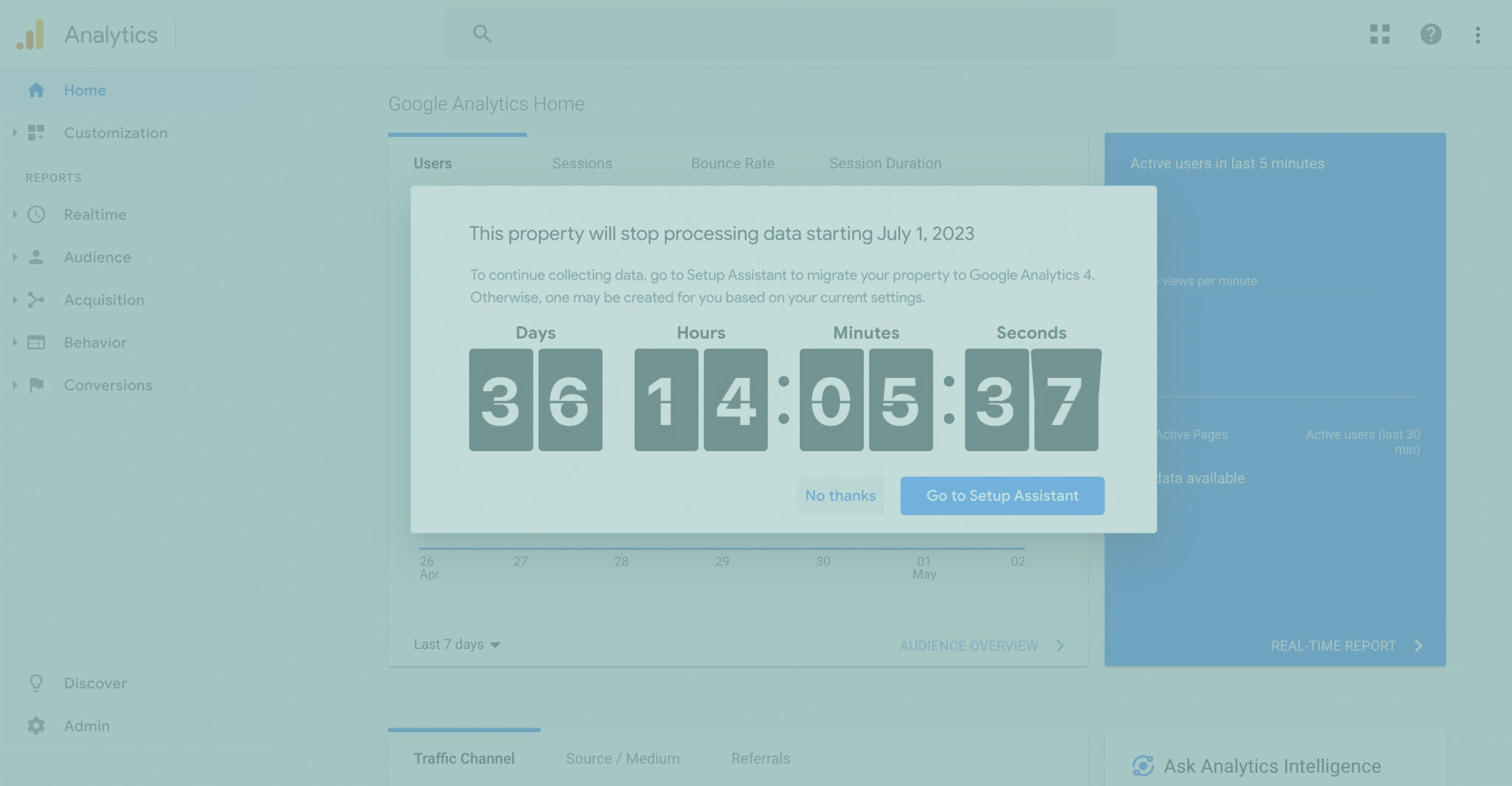Last year, Google released the latest version of its Analytics standard, Google Analytics 4 (GA4), which promises to bring significant changes to digital media buying and optimization. It replaces the Universal Analytics standard (UA) and promises to be “more flexible, privacy-friendly, and accurate than previous versions.” The switch-over will happen on July 1, 2023, and UA will stop being supported in the Google Analytics platform soon after: so businesses that don’t have a plan in place to manage this transition for their web and media reporting will need to move quickly.
As often with changes to how Google permits you to analyze and buy what they sell, a skeptic would immediately try to identify how the changes will allow them to extract more money from the digital marketing ecosystem. Objectively though, GA4 is indeed an enhancement that will afford sophisticated marketers more flexibility and depth in their analysis, particularly in tracking cross-device. It will be a bit more complex for businesses craving simplicity, which may allow poor performance to hide in the richer data. Marketers will need to stay on top of this change to extract the most benefit.
Here are the key changes that GA4 conversion will bring:
New approach to data
GA4 uses an event-based data model rather than a session-based data model. In a session-based model, user behavior is tracked and analyzed based on sessions or visits to a website. Metrics such as page views, time on site, and bounce rate are calculated based on the entire session, regardless of the number of actions taken by the user during that session. In an event-based model, user behavior is tracked and analyzed based on specific actions taken by the user on a website, such as clicks, form submissions, and video views. Each action is considered an “event” and is tracked separately. Top-level metrics such as conversion rate and engagement rate are then calculated from the specific events tracked. This means that we will need to refine our approach to tracking and measuring user behavior, defining specific events to track (e.g. button actions, form submissions, page scrolls) to get a more granular view of user behavior. We will also need to develop a more strategic approach to defining events and conversion goals overall, to ensure any paid media designated to drive traffic remains efficient.
Enhanced tracking capabilities
With the proliferation of smartphones, tablets and other connected devices, we need to track audience behavior across multiple touchpoints (e.g. websites, apps, messaging, offline interactions) to gain a better understanding of engagement attributed to each. With event-based analytics we can track specific sessions and actions between devices, giving a more accurate view of how users engage across the entire spectrum of brand activity.
Streamlined privacy options
More simplicity and control over how data is collected and used will give audiences the ability to consent or opt out of tracking; and afford advertisers more control over how data is collected and used. Tracking settings are more granular and data handling more automated, and include features such as auto-deletion and the ability to set a custom data policy. This also makes it more straightforward to comply with privacy legislation such as the CCPA.
Machine learning
GA4 uses “advanced machine learning algorithms” to help gain deeper insights into user behavior, identify patterns and trends, and predict future actions more accurately. These insights allow more personalized and targeted campaigns for greater engagement and better drive to purchase, particularly when paired with automated content optimization as part of an e-commerce strategy.
Data customization
With more flexibility and customization options we can create custom events, dimensions, and metrics to track specific user behavior and KPIs that are relevant to their business goals. We can also create custom reports and dashboards to gain a more in-depth understanding of audiences and behaviors.With the conversion comes a few drawbacks, mostly related to the rollout and the marketing technology ecosystem playing catch-up. Some legacy third-party tools, especially in the e-commerce world, are not yet able to integrate with GA4, though most have a plan to transition. This is a key consideration for marketers on determining how their conversation is staged. And of course, a comparative look back at historic data acquired from UA will not be possible through a GA4 lens, making optimization more difficult in the short term.
For those who primarily use Google for their digital marketing campaigns, GA4 is a powerful new tool to help optimize the performance of websites and apps. Its improved integration with the Google Ads platform will enhance identification and tracking of the most significant actions that users take, allowing better decisions on how to improve user experience and measure the effectiveness of campaigns.
For more information or assistance with resources on transition and application of analytics, please reach out.










